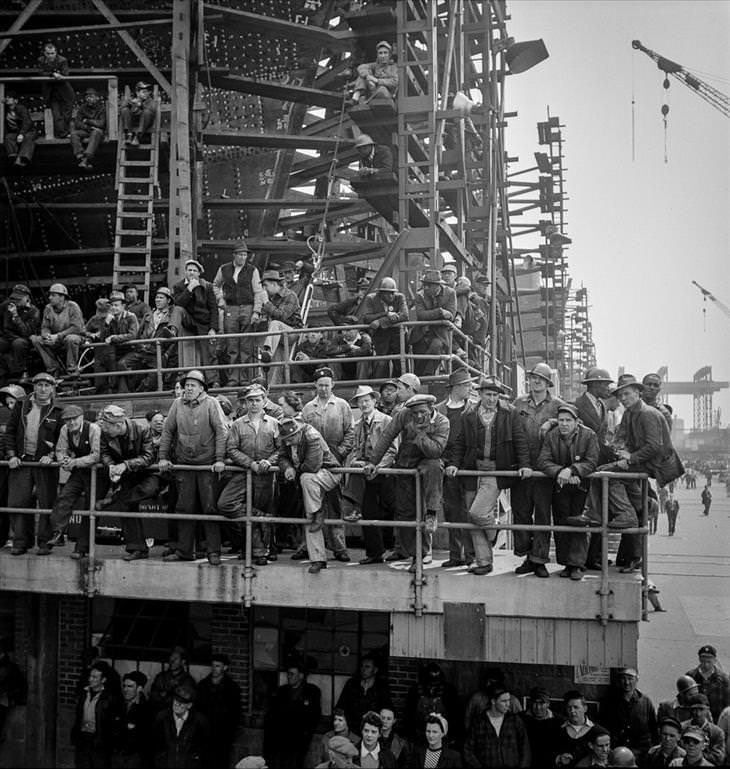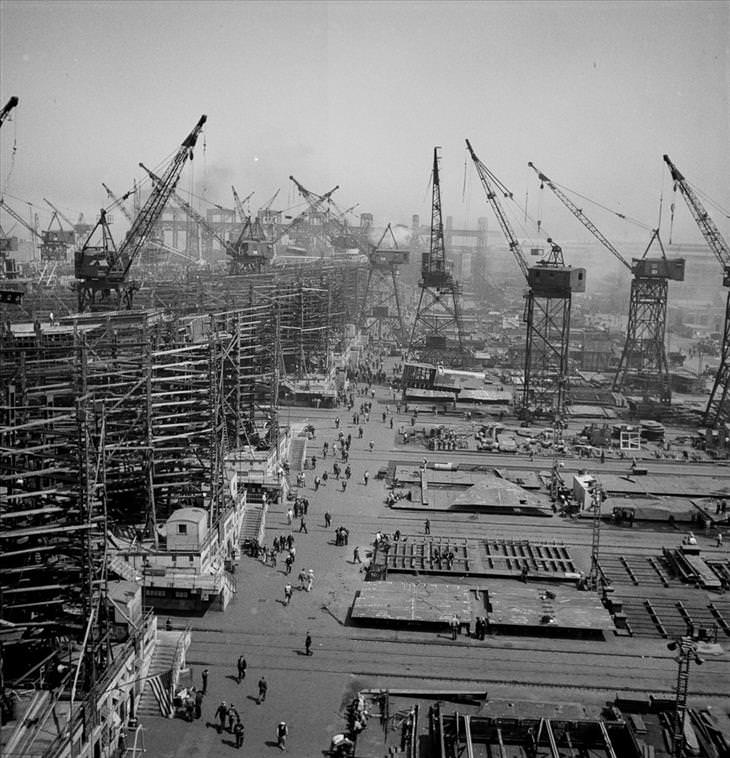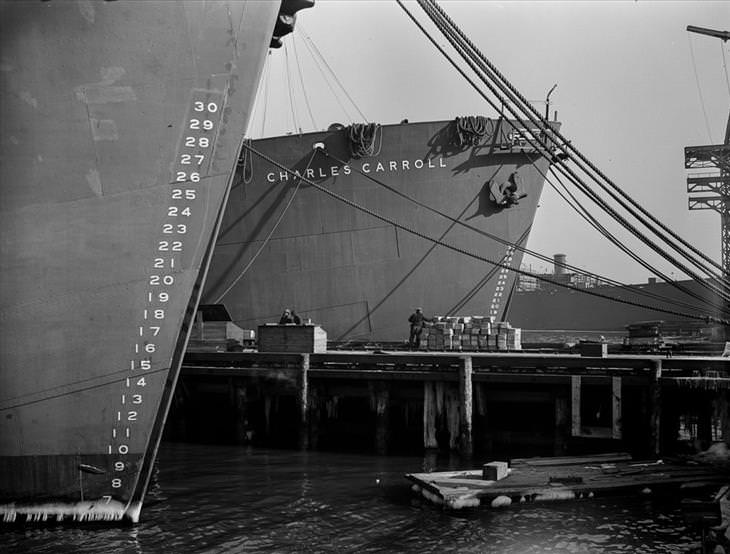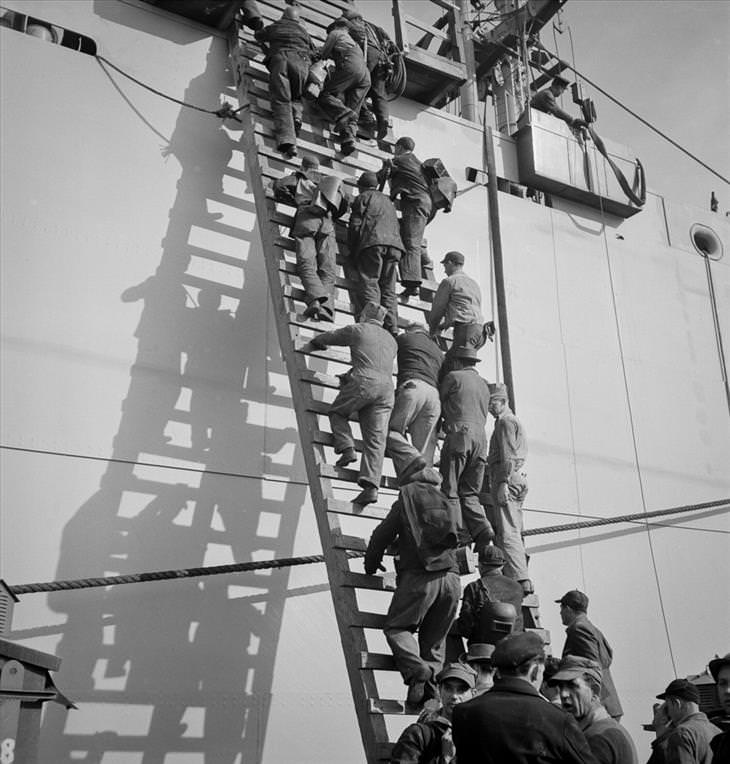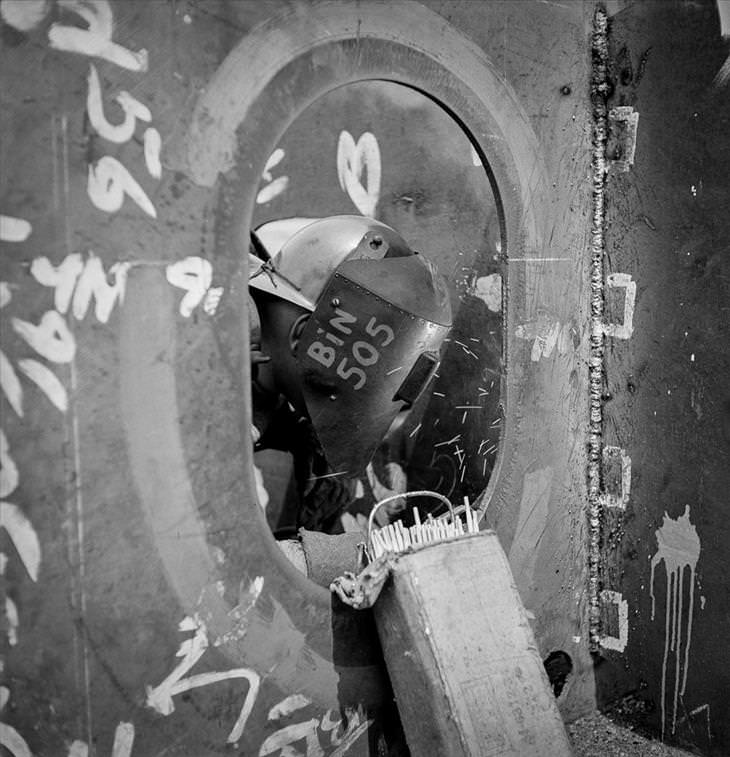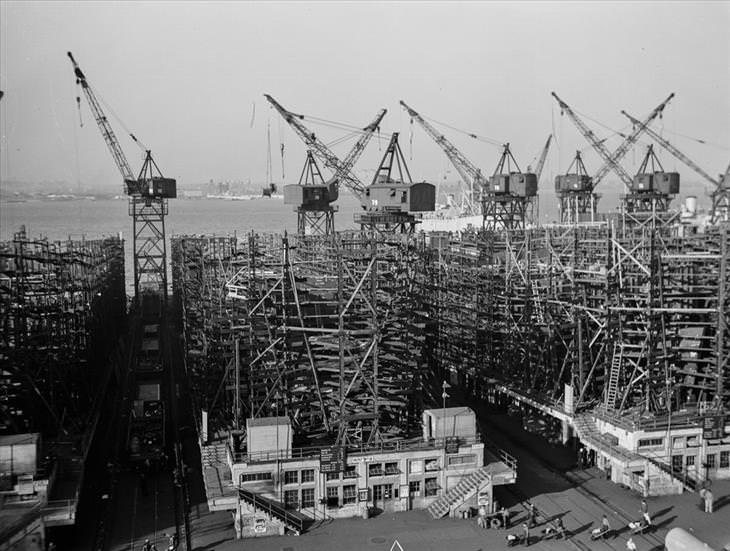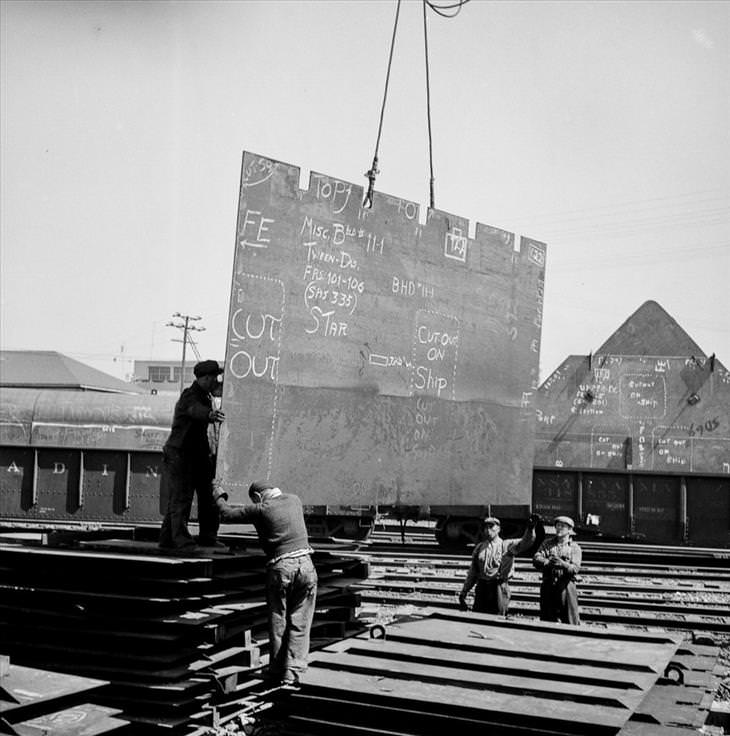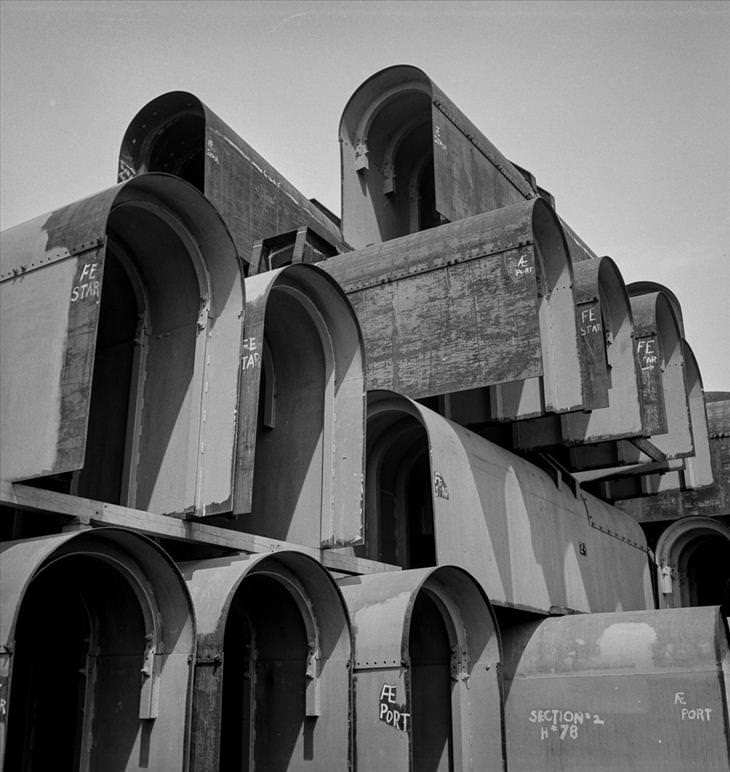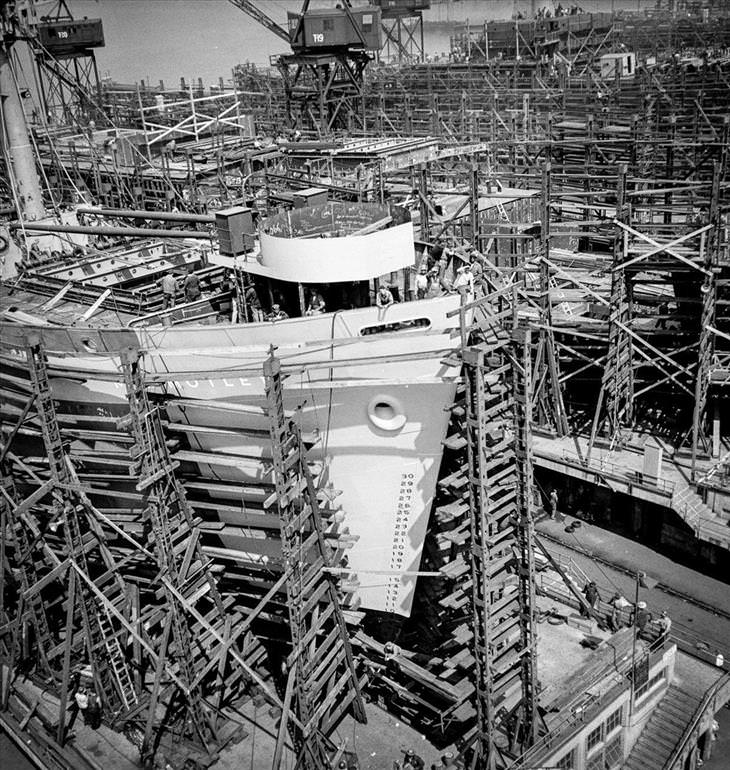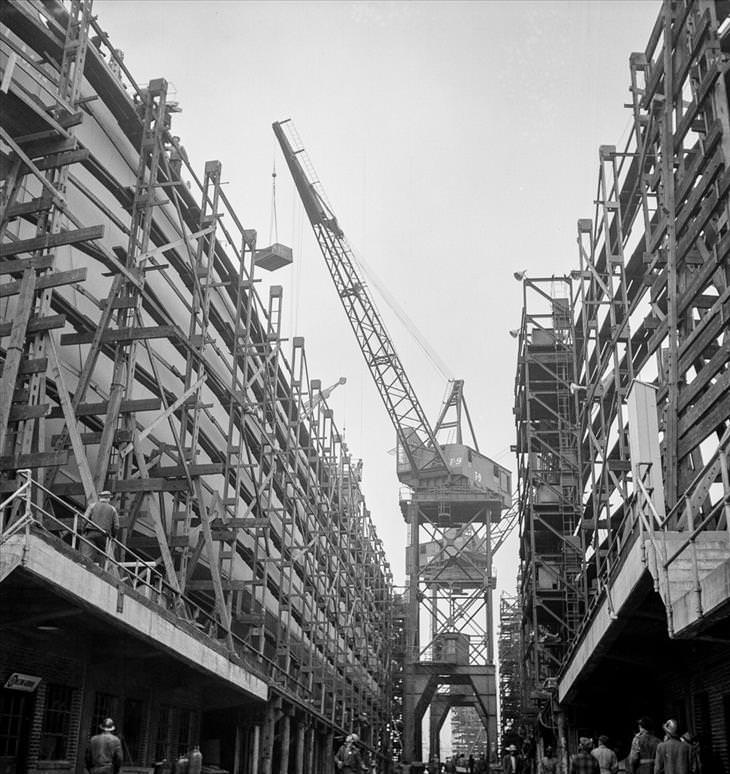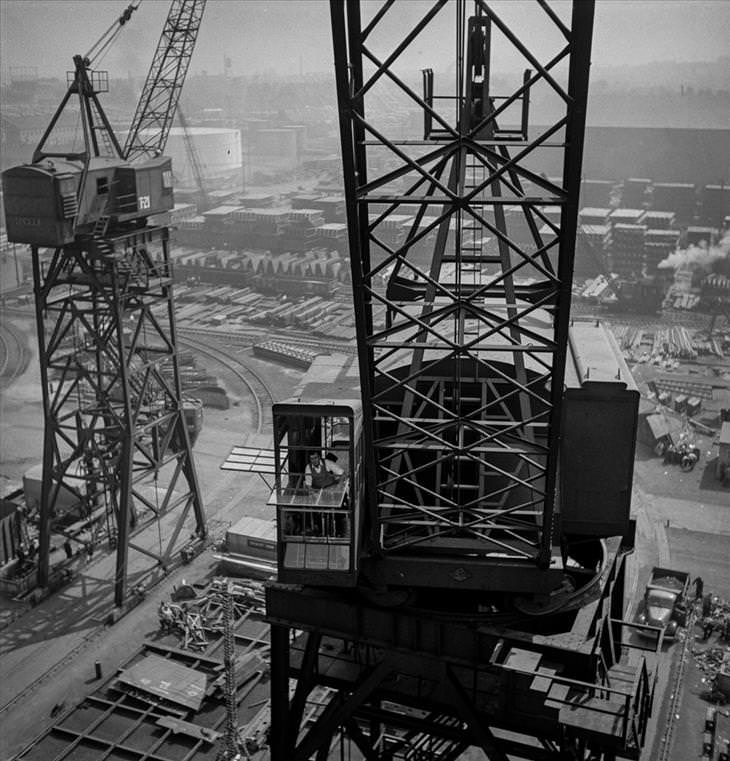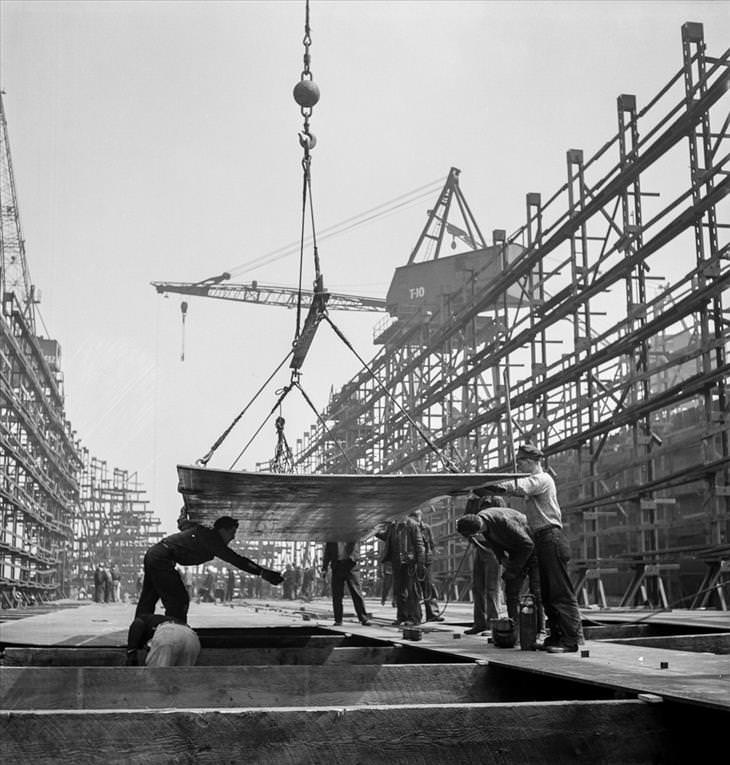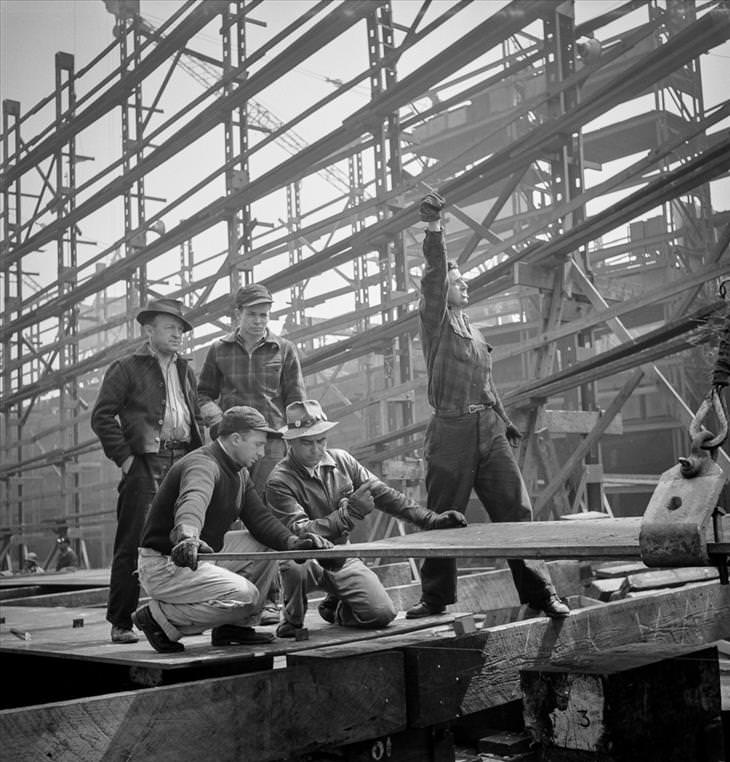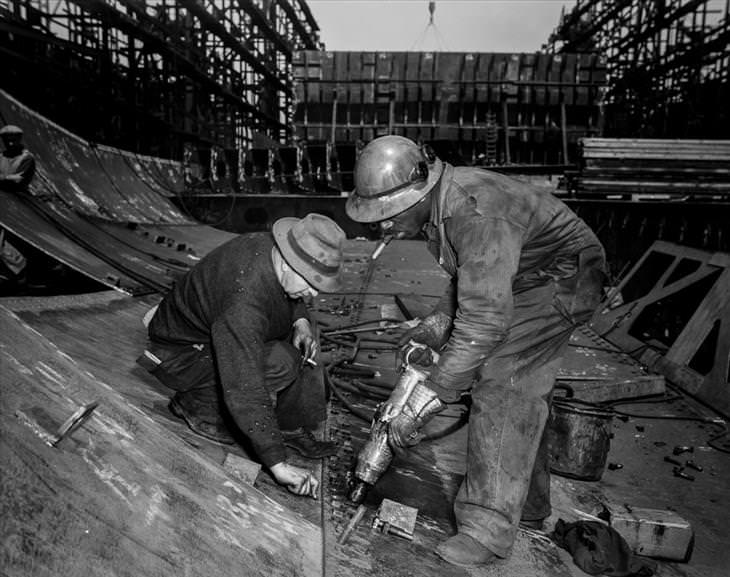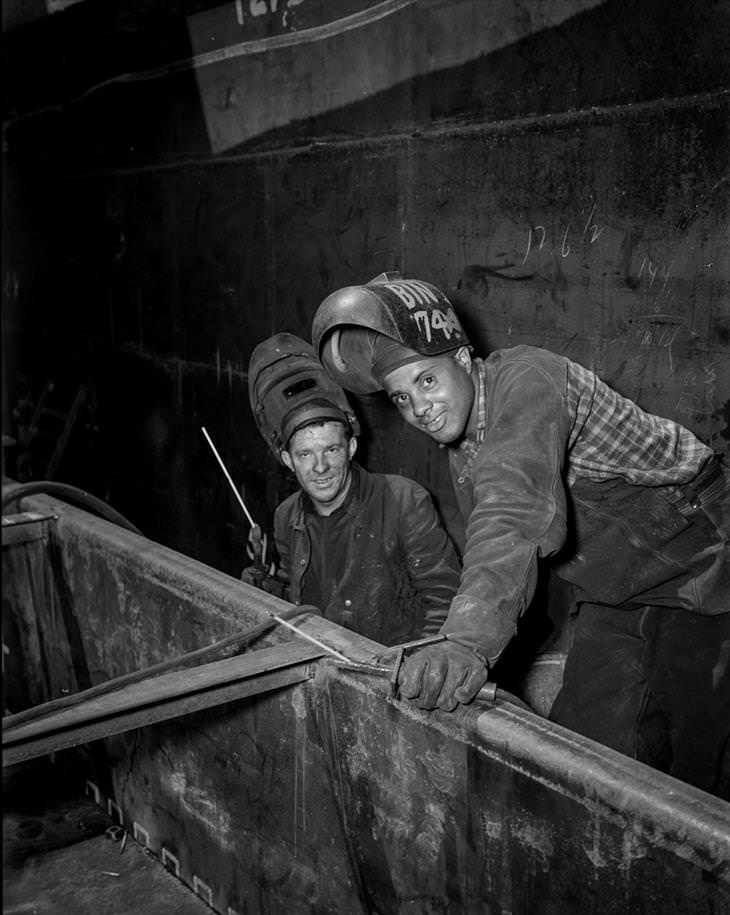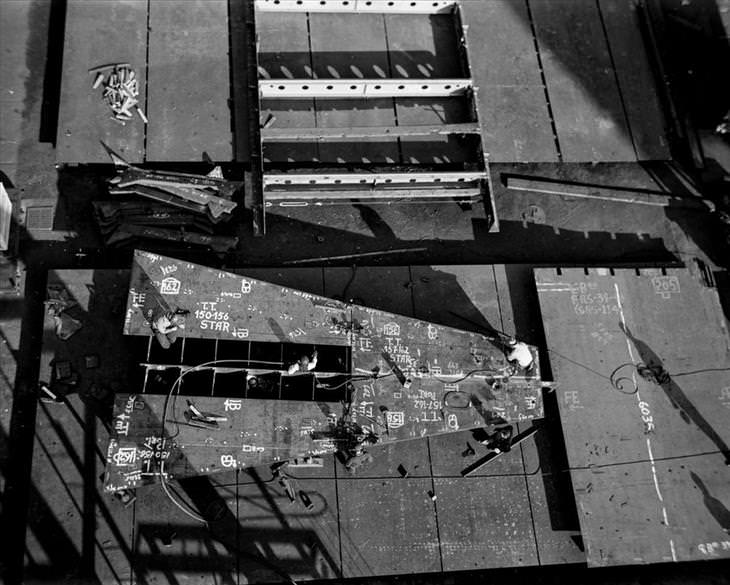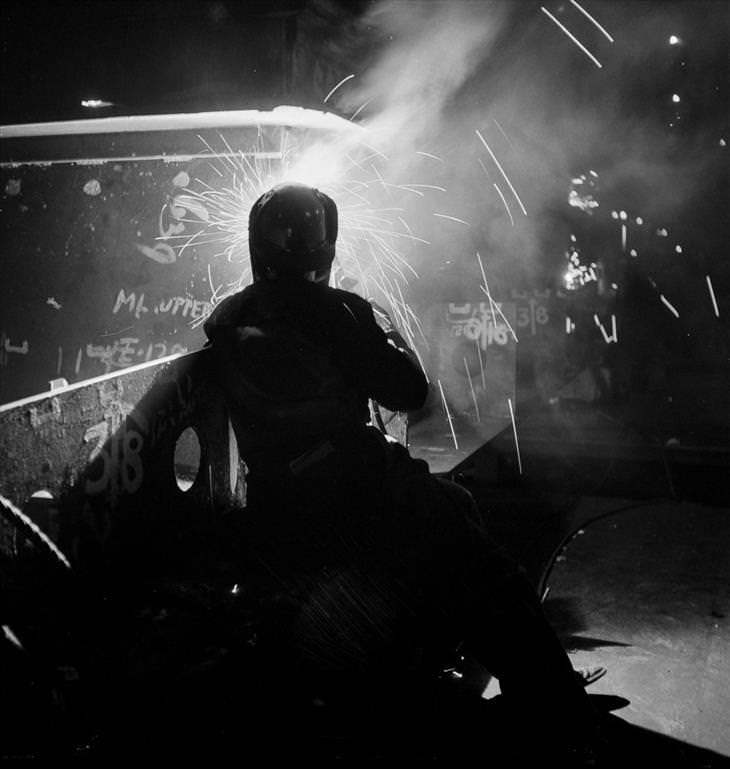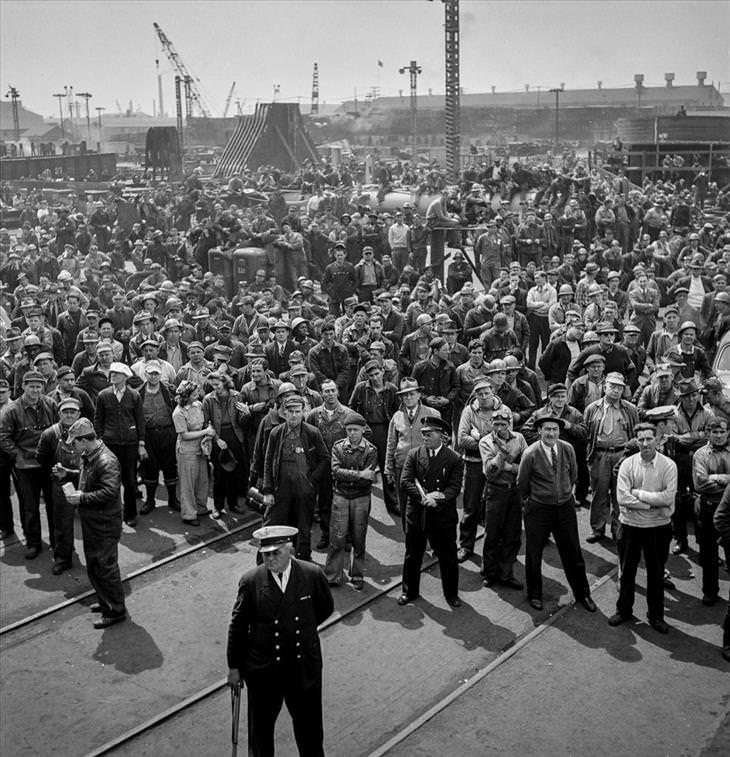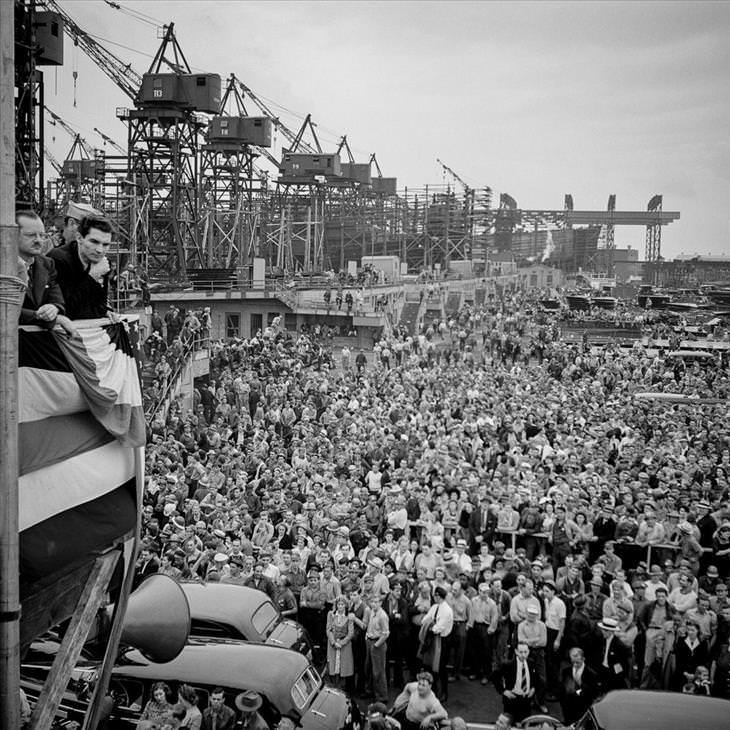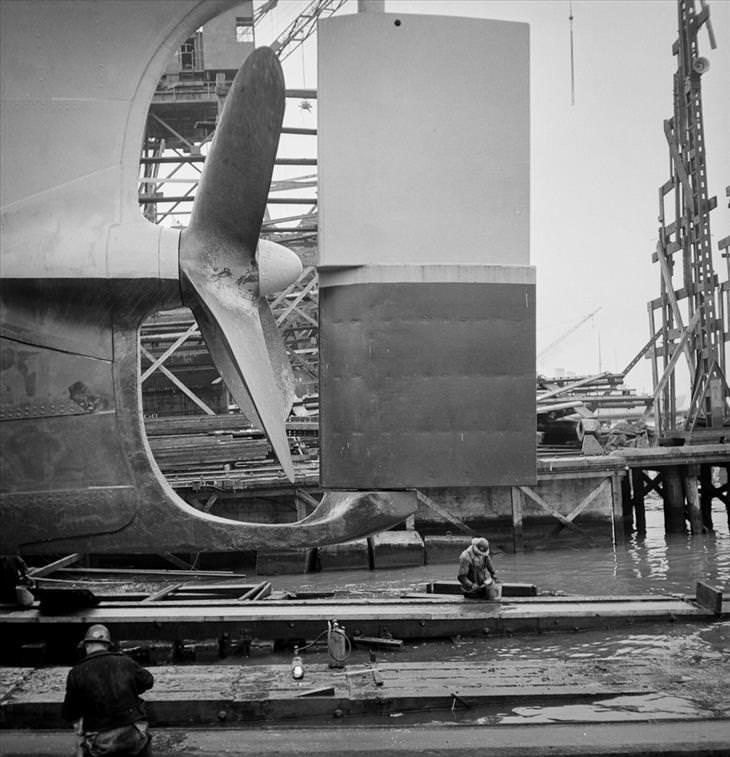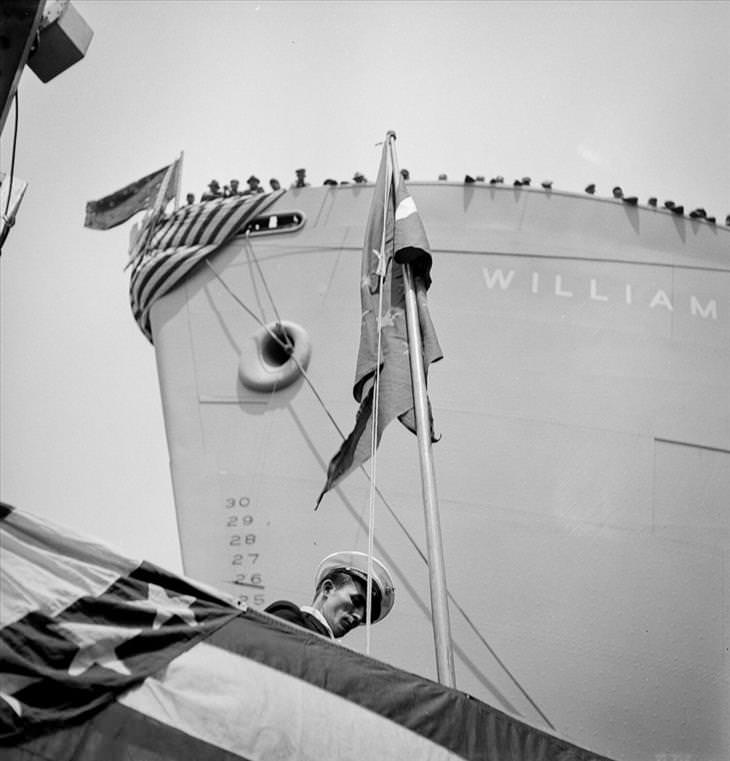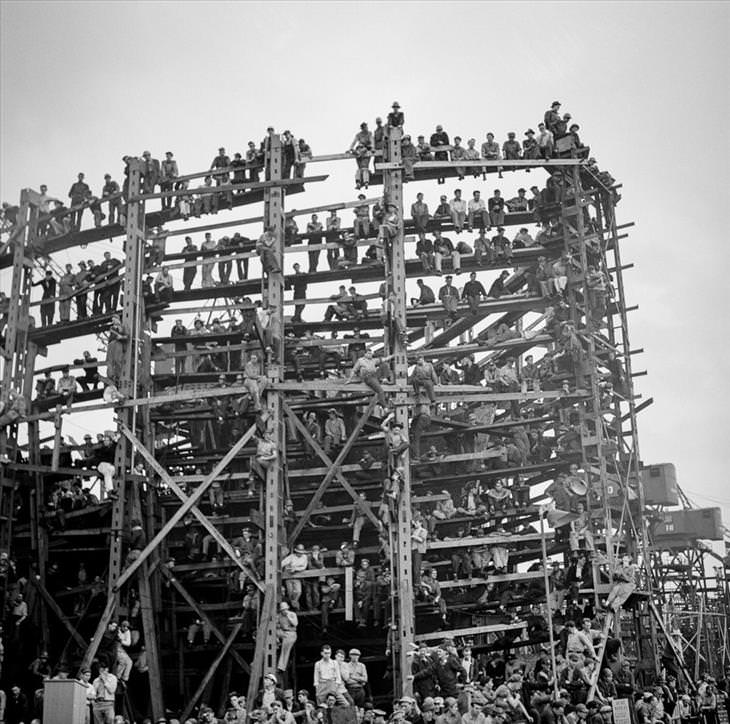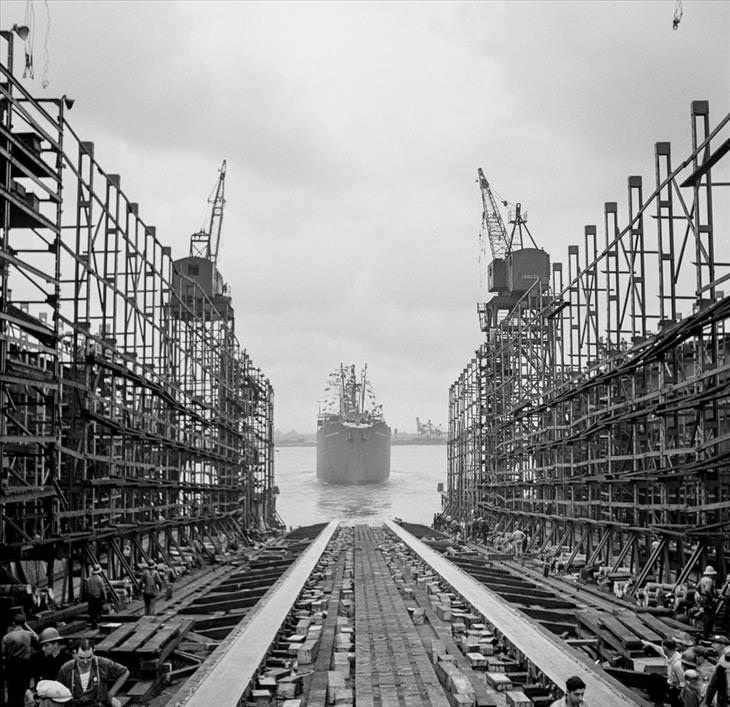
The Bethlehem-Fairfield shipyard was one of two new emergency shipyards constructed in the United States during World War II. These operations were part of the Emergency Shipbuilding Program, which was established by the US Maritime Commission in 1941.
The Emergency Shipbuilding Program was conceived because the US government needed to be able to move troops, material and cargo to allied countries, as well as to foreign theaters of war. In just four short years, more than 6,000 ships were built as part of the program.
Bethlehem-Fairfield got the first part of its name from the Bethlehem Shipbuilding Corporation, which the US government entrusted to run it. The second part came from its location, which was in the Fairfield area of the city of Baltimore.
Despite being designed to have a capacity of 10,000 tons, it was often the case that the ships carried much larger volumes of cargo in order to meet the demands of the US’ wartime needs. By the time the war was nearing its end, the construction process for the ships had been streamlined so much that, in some cases, they were ready to launch in just a single month.
Nowadays, the former site of the shipyard is occupied by the entrance to the Baltimore Harbor Tunnel, so there sadly isn’t anything left to see. When it was active, the shipyard employed some 27,000 people, and they built no less than 523 emergency ships in the space of four years.
Content and image source: Mashable Retronaut
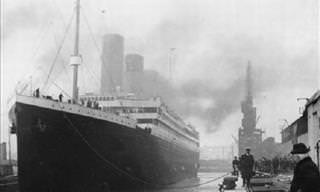
Let's Explore These Old Photos of the 20th Century
The first part of the century was not just a world of black and white, it was full of many shades of gray, as these illuminating images from history reveal.

Wasn't So Long Ago, But What A Change!
Enjoy some nostalgia with this collection of old photos:

Relive Your Childhood Magic With These Disney Parks Photos
Step back in time with these classic Disney park pics.
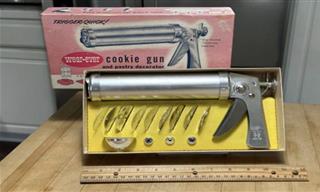
Remember These? 15 Forgotten Kitchen Gadgets
Do you remember these quirky kitchen gadgets?

These Wonderful Shots Are From Many Special Times Gone By
Nostalgia can be a beautiful thing, and these beautiful black and white images reinforce that notion. Jump back into the past with these shots.
 8:07
8:07
Which of These Old Bathroom Features Do You Want Back?
These old bathroom trends have disappeared over time.

In Pictures: Different Cultures, Different Childhoods
Photographer Massimo Bietti captures the innocence of children from all parts of our world through his lens.

25 Pictures That Will Make You Take a Second Look
These quick photographers have managed to get some pretty nifty shots of some truly amazing and bizarre things in this world.

These Photos Prove Embracing Grey Hair Can Be Empowering!
Talented hair colorist Jack Martin empowers women with grey hair to embrace their gorgeous silver hair and it's beautiful!
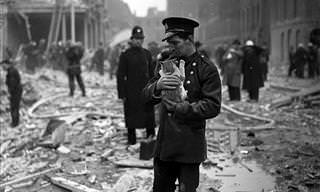
Lets Open a Window to the Past...
These 16 black and white 20th century photos show us some of the most interesting moments of the 20th century.

In Pictures: Northern Lights Photographer of the Year 2023
Check out the best winning images from the Northern Lights Photographer of the Year 2023.

15 Visual Masterpieces: Award-Winning Photos
Witness some of the most beautiful and meaningful award-winning photos from the All About Photo competition 2024.

20 Stunning Photos Captured at the Perfect Moment
Take a look at these perfectly-timed photos that will undoubtedly take your breath away.

18 Photos You Won't Be Able to Take Your Eyes Off
A collection of eighteen absolutely stunning photographs that you will definitely not be able to take your eyes off.

This Photographer Shows Us the Parts of Asia We Rarely See
This Japanese photographer Ryosuke Kosuge shows us the parts of Asia most people in the West rarely get to see...

Drop Everything and Take a Look at These Incredible Photos
You've simply got to check out these 20 powerful photographs that really do say a thousand words each!

Step Back in Time With These Rare Historical Photographs
Enjoy this new collection of historical photos!
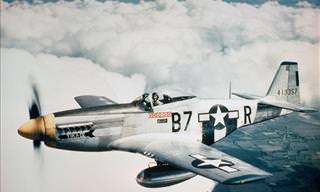
World War II As It Has Rarely Been Seen - In Color!
A selection of stunning World War II photos in color. Thousands of color images were produced during this devastating global conflict. These are bound to amaze you.

You Won't See These Rare Sights Twice in Your Lifetime!
Here are 20 rare and unbelievable sights that you certainly won't end up seeing twice in you lifetime!
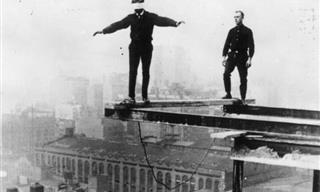
15 Rare Construction Photos That Capture History in Action
These are some of the most interesting photos from history.

15 Mind-Boggling Photos You Won’t Believe Are REAL!
Don’t let these optical illusions fool you! We assure you that none of them have been edited, despite how bizarre or unbelievable they look.
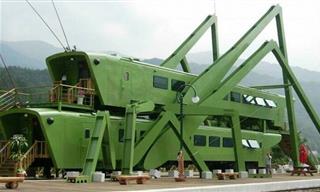
These Unconventional Buildings Will Make You Look Twice!
You haven't seen such bizarre buildings before!

A Collection of Ancient Trees 14 Years in the Making...
This beautiful project took a decade and a half to complete, but what beauty was captured will live on forever. Take a look for yourself.

Nature Used All Possible Colors to Create These Animals
Nature is filled with beautiful animals, plants and insects, with magnificent colors and shapes. The dazzling colors of these animals can only be found in nature, see for yourself in the photos below.

These Buildings Are Marvels of Human Creation!
Skyscrapers are the wonders of man-made construction technology and in the following article, you'll see 11 stunning buildings that will truly astonish you.

Ancient Wonders of Archaeology & Architecture – 16 Pics
These fascinating things from the past continue to inspire wonder and awe.

These Stunning Panoramic Photos Will Leave You in Awe
The exceptional winners of the 2024 Epson International Pano Awards will leave you in awe.

Some People Go Completely Overboard On Halloween...
While some people just love Halloween, there are others who don't bother with it at all. The owners of these houses certainly do though! Take a look.

18 Pictures That’ll Give You A Glimpse of The Past Century
Thanks to historical photographic records we get a glimpse of the way of life that was in the past years around the world...

The Artful World of Embroidery: 14 Inspiring Pics
These guys are seriously talented!
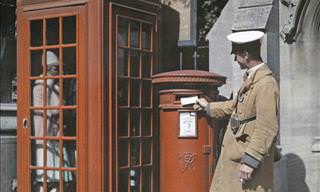
Amazing Re-Touched Photos of England Back in the Old Days
1920s England was the not tremendously jolly, civilized and the most important nation in world politics. These colored photos will show you what it was like.

Make Your Home Even Better With These Awesome Ideas
If you're looking to do a spot of home redecorating, these ideas will inspire you to greatness!

Now This is What Photography is All About...
Each of these photos tells a beautiful story...

Time Stood Still for These 21 Stunning Photographs
Time is a series of present moments that elapse and leave us with beautiful memories, so here are 21 such photographed moments never to be forgotten.

These Vintage Celebrity Photos From the Past Are a Delight
Time for some nostalgia! Check out these rarely seen photos of old school celebrities.

16 Quirky Garden Designs That Will Make You Chuckle
Gardens aren’t always beautiful and exotic. Some are just straight up bizarre!

These Vintage Photos Show People Grew Up Faster Back Then
These 15 photos clearly seem to suggest that people in the past have matured much faster than people do these days...

What Would 15 Long Departed Celebrities Look Like Today?
This online creator used an AI app to imagine what 15 beloved celebrities who left us too soon would have looked like today. The results are astounding!
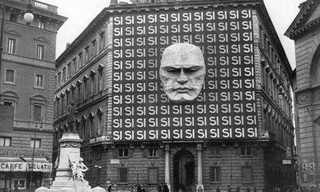
History Doesn't Forget: Rare Historic Photos!
Here, the past is still alive and kicking, and for a few moments, we are back in those momentous time and events that shook the world not that long ago...

14 Exceptionally Beautiful Home Baked Cakes and Cookies
If you love desserts and value creativity, you'll love this collection of magnificently decorated cakes, pies, and cookies!
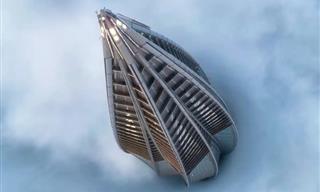
12 Award-Winning Drone Photos That Inspire Awe
Check out the outstanding winners of the 2024 Drone Photo Awards.

15 Fascinating Pictures of Extraordinarily Rare Things
The world around us is filled with captivating elements.Take a look at this collection of 15 fascinating photographs of rarely seen things.

These Photos Were Captured Just at the Right Moment...
These amazing photos were each shot at exactly the right moment for hilarious, beautiful and incredible photographs. Take a look!

You've Got to See This Award-Winning Aerial Photography!
Have a look at some of these incredible award-winning drone photos from Dronestagram's annual contest.

These Brilliantly Clever Adverts Turned Heads - 15 Pics
Now this is how you make an ad!

A Mother’s Love Captured in 15 Stunning Animal Photos
A mother’s love for her child is one of the most heartwarming sights one could witness, a love that transcends the barrier between humans and animals
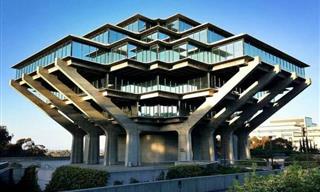
Extraordinary Buildings: 13 Stunning Architectural Marvels
Aren’t these buildings just fascinating?



